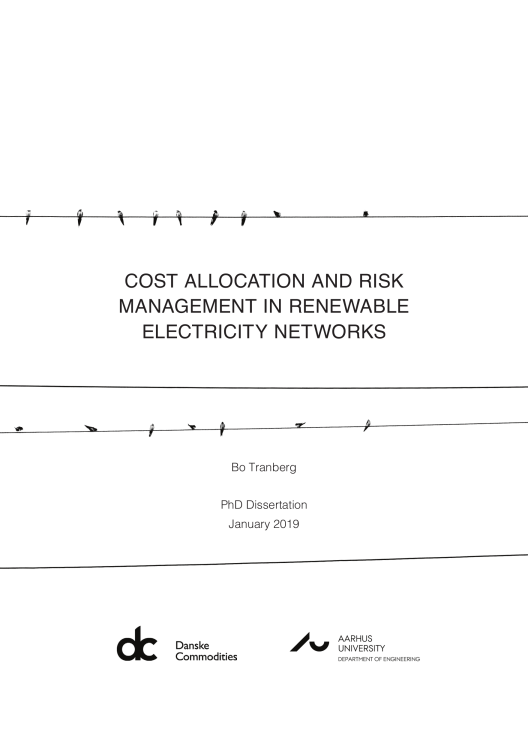
Summary
As part of the efforts to mitigate climate change, there has been rapidly increasing share of renewable power generation in the European electricity system. In the interest of bridging the gap between corporate and academic research interests, this PhD project presents a research collaboration on renewable electricity systems between Aarhus University and the energy trading company Danske Commodities.
The first part of this dissertation has the perspective of a central planner exploring the optimal system design based on simplified fundamental models of the European electricity system. The aim is to determine the optimal locations and capacities of renewable generation sources while keeping the system reliable and cost-efficient. A subsequent step is to allocate the costs associated with the investments needed for the optimal electricity system of the future. I apply power flow tracing techniques for allocation of transmission system usage, cost allocation of generation capacities as well as consumption-based carbon accounting.
In the second part, the perspective is changed to that of individual investors in renewable generation technologies, specifically wind turbines. I apply econometric models in the form of copulas to jointly model wind power production and power spot price. The goal is for an energy trading company to minimize the risk associated with long-term wind power purchase agreements, which, in turn, minimizes the risk of investors in these wind turbines. This provides additional incentives for similar investments and thereby increasing the share of renewable power generation in the European electricity system.
Applying physical and financial models to different aspects of the European electricity system has led to insights on the differences between the two modeling perspectives. The central planning perspective is useful when exploring pragmatic solutions to the overall design of the European electricity system of the future, but provides no guidance for the individual actors in the system. In contrast, an investor in renewable generating assets focuses on a set of business goals with little regard to their impact on the overall electricity system.
The link between the two perspectives is the policy makers, who regulate the electricity system. The results from system models using the central planning perspective can be used by the policy makers as guidelines to provide the right incentives for investors, and other actors in the system, such that the current European electricity system develops towards the optimal and sustainable system of the future.